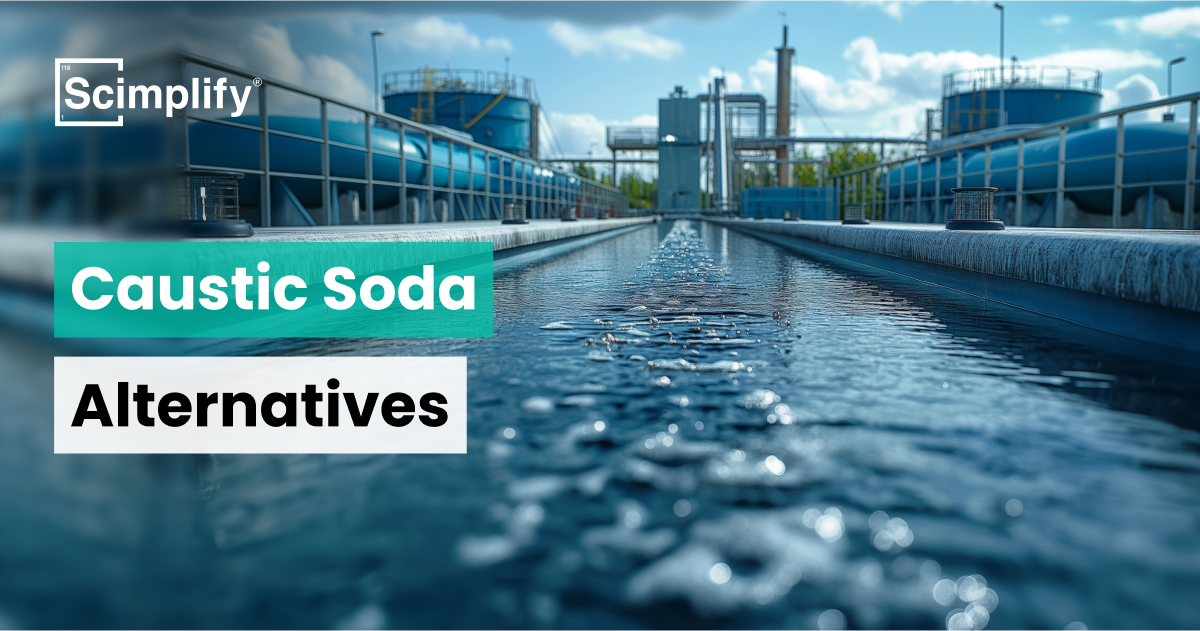Caustic Soda - Alternatives, Pros and Cons
Caustic Soda is vital in industry but poses safety risks. Safer, eco-friendly substitutes include KOH, soda ash, lime, magnesium hydroxide & more. Each offers pros like cost, safety, or efficiency, with trade-offs in availability, dosage, or performance depending on industry use.

Caustic Soda is a very highly used product in industrial manufacturing, cleaning, and water treatment; however, using alternatives that are safer, eco-friendly, and cost-effective is becoming a probable and practical strategy. Good alternatives include: potassium hydroxide, soda ash, lime, and magnesium hydroxide. However, these do not apply to all. Sometimes, soda ash and magnesium hydroxide can be less expensive, but that depends on the scope of a particular application and the industry demands.
Its extreme corrosiveness, as well as its safety and handling hazards, have led industries to identify safer and greener alternatives to Caustic Soda that can perform equally but with reduced risks.
Partner with us for a reliable supply of Caustic Soda!
Alternative Products of Caustic Soda
Top Caustic Soda substitutes and their pros and cons include:
1. Potassium Hydroxide (KOH)
As a strong alkali, it is also used as a direct substitute for sodium hydroxide in cleaning operations, in chemical applications, and in specialty uses.
- Pros
- Similar chemical behavior to Caustic Soda.
- Better solubility in water.
- Effective in liquid soap and biodiesel production.
- Cons
- Higher cost compared to Caustic Soda.
- Less widely available in bulk.
2. Soda Ash (Sodium Carbonate, Na₂CO₃)
A slightly alkaline agent that finds use as a PH adjusting agent, cleaning solutions, and glass industry fluxing receptor.
- Pros
- Less corrosive than sodium hydroxide.
- Effective neutralizing and cleaning agent.
- Widely available and cost-efficient.
- Cons
- Weaker alkalinity requires larger dosages.
- Not effective in high-strength chemical reactions.
3. Ammonium Hydroxide (NH₄OH)
It is a low concentration of ammonia in water, which is used as fertilizer and in various household cleaners, plus some food and agricultural purposes.
- Pros
- Safer to handle in diluted solutions.
- Useful in food-grade and agricultural applications.
- Provides buffering capacity.
- Cons
- Strong odor and toxicity at high concentrations.
- Limited industrial substitution in heavy processes.
4. Magnesium Hydroxide (Mg(OH)₂)
A weak alkaline solution with buffering ability, which is extensively used in wastewater treatment, and scrubbing of flue gases, as well as a neutralizing agent that is environmentally friendly
- Pros
- Environmentally friendly and safe to handle.
- Effective for neutralizing acidic wastewater.
- Produces less heat during dissolution compared to NaOH.
- Cons
- Slower reaction rate than Caustic Soda.
- Needs larger quantities to have the same performance.
5. Lime (Calcium Hydroxide, Ca(OH)₂)
A stabilized common alkali used extensively in water treatment and construction, and for large-scale acidic wastes neutralization.
- Pros
- Inexpensive and abundant.
- Controls pH while neutralizing acidity.
- Widely adopted in municipal and industrial treatment.
- Cons
- Generates more sludge compared to Caustic Soda.
- Handling requires dust control measures.
6. Sodium Bicarbonate (NaHCO₃)
A non-toxic alkaline compound with gentle neutralizing properties, which is used in food processing, pharmaceuticals, and light cleaning.
- Pros
- Safe and non-toxic to the environment.
- Effective for small-scale neutralization.
- Non-corrosive compared to sodium hydroxide.
- Cons
- Not suitable for heavy industrial use.
- Requires large quantities for significant pH adjustment.
7. Trisodium Phosphate (TSP)
A strong alkaline inorganic salt, which has a powerful cleaning and degreasing power and is applied in detergents, surface preparations, and pH adjustments.
- Pros
- Strong cleaning agent.
- Acts as a softener of water.
- Valuable in detergents and cleaning industrial products
- Cons
- Environmental concerns can occur with phosphate discharge
- Has been banned in parts because of water pollution regulations.
8. Organic Solvents (Ethanolamines)
Organic bases with surfactants and neutralizing capabilities, which can be applied in cleaning formulations, cosmetics, and specialty chemical processes.
- Pros
- Versatile, with surfactant and neutralizing properties.
- Less corrosive to equipment compared to Caustic Soda.
- Effective in cosmetics and specialty formulations.
- Cons
- Higher cost than sodium hydroxide.
- Limited large-scale substitution in heavy industries.
Conclusion
Caustic Soda has been essential in chemical production, cleaning, and water treatment, but growing concerns for safer and more affordable options have increased the focus on Caustic Soda substitutes, with few alternatives, such as potassium hydroxide, soda ash, lime, and magnesium hydroxide, widely used across industries, though their efficiency and cost advantages can vary, with calcium hydroxide proving more suitable in certain applications.


